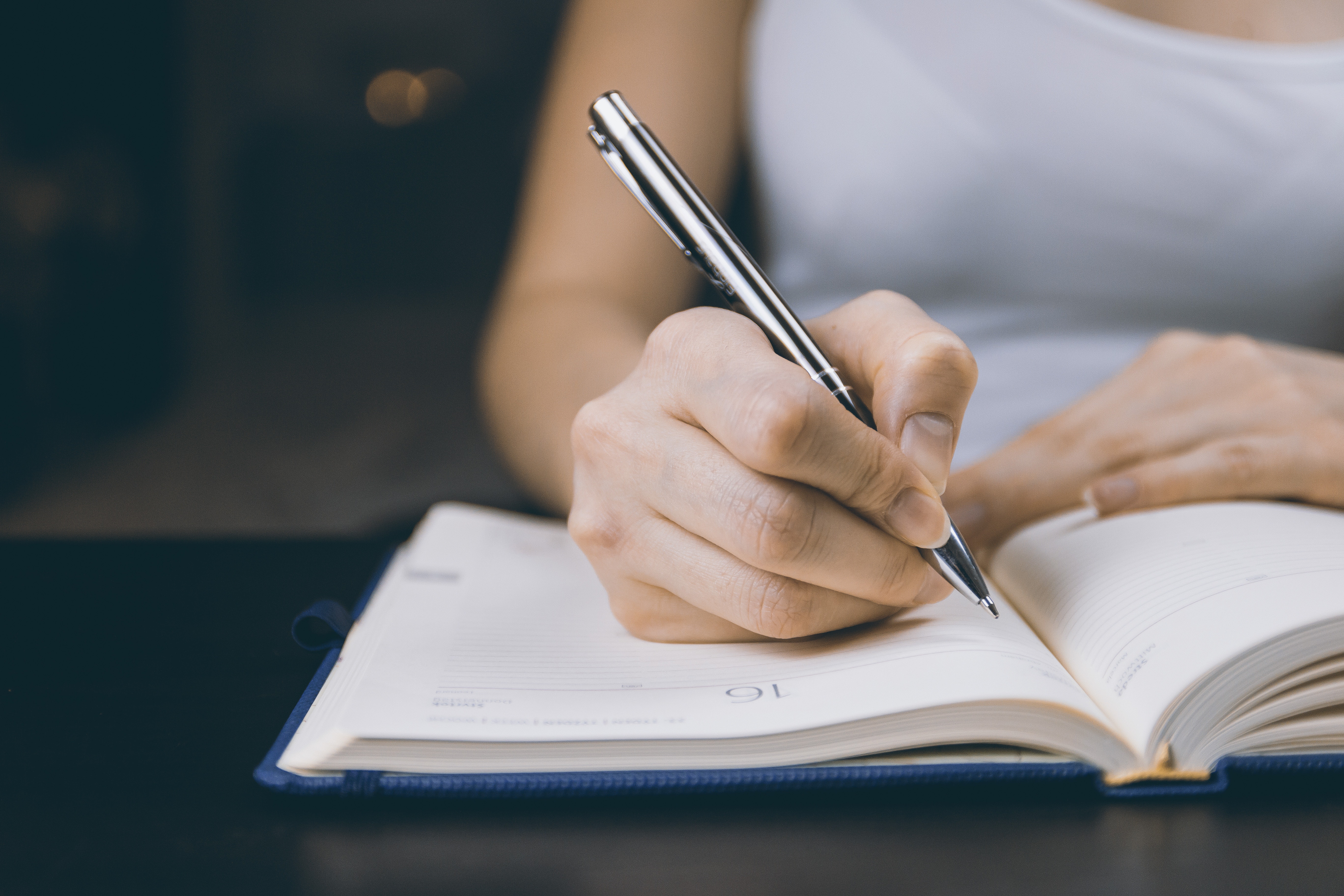When we knit we do so for a wide variety of reasons.
Just to name a few this could be to relax, to help others, and to make something pretty.

But of all the different reasons “why” we knit, I’ve noticed that the actual act of knitting, the “how”, falls into three distinct categories, or states.
So let’s find out what they are…
The Three States of Knitting
We’ve all heard the phrase “practice makes perfect”. And to some extent, that is true. Even with knitting.
However as our journey into the knitting world evolves, we risk losing the ability to use knitting for one of the most common reasons why: to relax.
As a beginner, we focus on our knitting. Making each stitch correctly, and learning new stitches. Developing and testing our skills with ever more challenging and complex patterns. The Focused Knitting State.
As we progress and become competent and comfortable with those stitches our hands start to think for themselves. We can slip into a meditative state, where knitting relaxes us. The Relaxed Knitting State.
As we notice our ability to knit without paying attention to it, simple items anyway, we start to think of the other things we can do whilst knitting. TV. Reading. Audiobooks. This is The Distracted Knitting State.
But this last situation, or state, is where we risk losing our ability to tune into the other two states. Specifically The Relaxed Knitting State.
Let’s look at each state a bit more…
The Focused Knitting State
The Focused Knitting State covers all knitting that requires our full and undivided attention.
The very start of our knitting journey is very much done within this state. Could you imagine picking up needles and yarn for the very first time, and learning how to cast on and knit, all whilst not really paying attention to it? Of course not. You need to focus on the movements of your fingers, the angle of the needles, and the path to guide the yarn over.
You are very much aware, alert, and conscious, to only the knitting process.
As our knitting journey progresses we go back to this state every time we wish to learn a new stitch or technique or try a new and/or complicated pattern.
This knitting state can be thought of as reasonably relaxing. However when the knitting session finishes you will not have the same sense of satisfaction and energisation that The Relaxed Knitting State delivers, as you are typically eager to continue knitting.
The Relaxed Knitting State
The Relaxed Knitting State is where true relaxation and re-balancing occurs. It is where our body becomes automated, and our mind is allowed to wander into our subconscious thoughts.
When in this state, you tune into a meditative realm that is exclusively personal to you. I call this the Knitting Netherspace.
This knitting state typically requires a simple and repetitive knitting project. Anything patterned or slightly complicated requires you to constantly switch between this and The Focused Knitting State. Which sadly is not very conducive to relaxing and re-balancing ourselves.
At the end of a knitting session in The Relaxed Knitting State, you typically feel satisfied with your knitting and energised to complete a different task elsewhere in your life.
This state, in the realm of true relaxation, is what many knitters strive for, but it is becoming less and less common. Despite the notion of “knitting as a way to relax” being thrown around on social platforms and in the media more often.
The Distracted Knitting State
The Distracted Knitting State is where you are multi-tasking. You are both knitting and doing something else.
Other activities usually include watching TV, reading a book, listening to an audiobook or podcast, or using social media.
Once you move past the beginner phase of being a knitter, and you realise you can work a stitch without paying full attention to it, it becomes almost expected nowadays for you to also do something else. And so you do.
This is the most common state of knitting undertaken in our modern lives. Not only because it is the “expected way of modern life”, so it’s what we do, but also because it is the easiest state to get stuck in.
How to Balance the Three States
Striking a balance between the three knitting states is not exactly the ideal outcome we seek though.
Many studies have proven that multi-tasking is neither conducive to relaxation nor of developing our talents. The constant refocusing of our attention in The Distracted Knitting State refuses to give our mind a break, slows our productivity, and causes an increase in our stress.
In order to bring the purpose of knitting back into reality, be that to produce items, to learn a new skill, or to relax, we need to dispense of The Distracted Knitting State entirely.
Once relieved of this state, we are left with the two most important. These should be the only two states of knitting we allow ourselves to engage in. The balance of these will vary depending on your daily personal needs.
For example, I myself attempt at least one session of The Relaxed Knitting State per day, and two sessions of The Focused Knitting State. However, if we have had a particularly difficult morning then it is more likely to be two Relaxed and one Focused. I try to limit a knitting session to between 15-60 minutes. However, I am not immune to engaging in The Distracted Knitting State on occasion.
The easiest way to decide the balance that is right for you, is to include knitting time into your daily schedule. Blocks of 15-60 minutes are best, with other activities and tasks in between. When you know a knitting session is coming up you can decide if relaxation is really what you need or not. If you find yourself struggling to re-engage with a relaxed state for knitting, my eBook the Knitting Netherspace gives you 8 steps that will get you there.
The One Positive Exception of The Distracted Knitting State
You may at this point be wondering what example of multi-tasking whilst knitting can be positive. To answer this question, I say knitting groups.
If you’ve ever been to a knitting group then you will know that some, but usually not very much, knitting actually takes place. It is mostly eating snacks, drinking tea, nattering, and showing each other what you are making.
However, the social benefits of this situation far outweigh the negativity of multi-tasking. So, if you must multi-task whilst knitting, I ask that you make it a group knitting activity. This may be in person, or via live media streams, but please don’t be alone.
Best wishes, Sam xox
If you want to receive new articles from us directly into your inbox, then please sign up below.


0 Comments